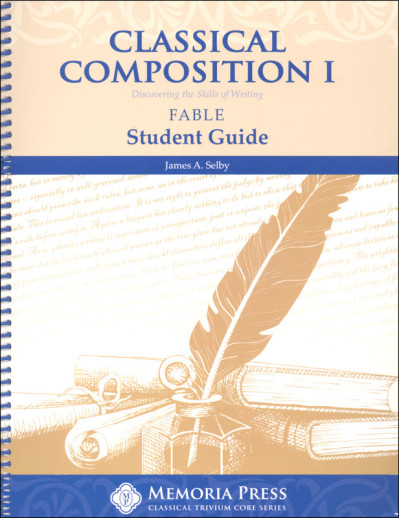We use cookies to make your experience better. To comply with the new e-Privacy directive, we need to ask for your consent to set the cookies. Learn more.
Classical Composition I: Fable Stage Student Book
20 lessons that teach outlines, variations and paraphrasing using fables as short, narrative examples. The goal is to learn how to use words to so engage the imagination that the idea is believed by the audience. The Student Book provides space to complete most assignments (although some final drafts are to be completed on separate paper). 105 pgs, pb.
Regardless of grade level, all students entering the program will start at the Fable Stage, but students older than 8th grade will do each course in a semester rather than a year. Students will learn outlines, variations and paraphrasing using fables as short, narrative examples. As the entry level course for Classical Composition, Fables is extremely user-friendly with instructions provided.
Each lesson in the Fable Stage starts with reading the fable, determining the three plot components, and discovering synonyms for selected words leading to writing sentences in a varied way. The fable is then outlined and two paraphrases are written incorporating specific suggestions. Instructions for each step are provided and follows a similar format. Read the fable, determine the three plot components, and discover synonyms for selected words leading to writing sentences in a varied way. The fable is then outlined and two paraphrases are written incorporating specific suggestions.


Trying a new writing class, wish us luck!
Recommendations from other users.
cheapest option and quickest delivery
I have the set with the DVD, but forgot to get 2nd book. (placed this order just for this book, got the rest to get to the free shipping)